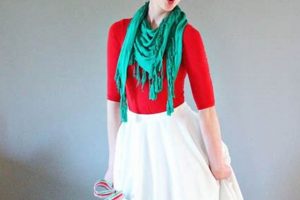Constructing storage solutions within a wardrobe or storage area using readily available materials and individual labor represents a cost-effective method for optimizing space and organization. These projects often involve utilizing wood, metal, or laminate materials to create custom shelves, drawers, and hanging systems. An example includes building a tiered shelf system within a reach-in closet to maximize vertical space utilization.
The advantages of such construction include increased storage capacity, tailored organization based on specific needs, and a potential reduction in overall expenses compared to pre-fabricated systems. Historically, resourcefulness and adaptation to available materials drove the creation of such solutions; modern iterations benefit from readily available plans, tools, and materials, further simplifying the process.
Subsequent discussion will address varied materials suitable for these endeavors, explore common construction techniques, and present design considerations for optimizing functionality and aesthetic appeal. The focus remains on providing practical guidance for successful project completion.
Tips for Successful Closet Shelving Construction
Achieving optimal results in closet shelving construction requires careful planning, precise execution, and consideration of various factors. The following tips provide guidance for a successful outcome.
Tip 1: Accurate Measurement is Paramount: Prior to material acquisition, meticulously measure the closet’s dimensions. Account for wall irregularities and obstructions such as pipes or electrical boxes. Precise measurements ensure proper fit and minimize material waste.
Tip 2: Material Selection Influences Durability: Choose materials appropriate for the intended load and aesthetic. Solid wood provides structural integrity; however, engineered wood, such as plywood or MDF, offers cost-effectiveness and stability. Consider edge banding for exposed edges of engineered wood to enhance appearance and prevent damage.
Tip 3: Secure Fastening Techniques are Essential: Employ appropriate fasteners, such as screws or nails, based on the materials being joined. Predrilling pilot holes prevents wood splitting. For drywall installation, utilize wall anchors to ensure sufficient support. Consider the weight of items to be stored when selecting fasteners.
Tip 4: Level Installation is Critical: Use a level to ensure shelves are horizontally aligned. Uneven shelves compromise stability and aesthetic appeal. Shims can be used to correct minor irregularities in wall surfaces.
Tip 5: Optimize Vertical Space: Design shelving systems that maximize vertical space utilization. Adjustable shelves provide flexibility to accommodate varying storage needs. Consider incorporating drawers or baskets for smaller items.
Tip 6: Adequate Lighting Enhances Functionality: Install appropriate lighting within the closet to improve visibility. LED strip lights offer energy efficiency and provide ample illumination. Proper lighting aids in locating items and enhances overall organization.
Tip 7: Prioritize Safety: Wear appropriate safety gear, including eye protection and gloves, during construction. Ensure adequate ventilation when working with paints, stains, or adhesives. Exercise caution when using power tools.
Adhering to these guidelines ensures structural integrity, optimized functionality, and a visually appealing result. Careful attention to detail throughout the construction process maximizes the long-term benefits of custom closet shelving.
The subsequent sections will explore common design layouts and advanced construction techniques for enhanced customization.
1. Measurements
The accurate acquisition of dimensional data constitutes a foundational element in the successful execution of custom wardrobe storage solutions. Precise measurements directly influence material selection, design feasibility, and the overall structural integrity of the finished project. Imprecise or incomplete data can lead to material wastage, compromised functionality, and potential structural failures.
- Overall Closet Dimensions
This entails determining the precise height, width, and depth of the closet space. These measurements dictate the maximum dimensions of any shelving units or organizational structures that can be accommodated. Neglecting to account for existing architectural features, such as baseboards or crown molding, can result in ill-fitting components and require costly modifications. Examples of such features are door frames, light switch and electrical outlet.
- Wall Irregularities
Walls are rarely perfectly square or plumb. Measurements must account for any variations in wall angles or surface irregularities. The use of a level and straight edge is essential to identify and quantify these deviations. Compensating for these imperfections during the design and construction phases ensures a flush and stable installation. This element is important for installation guide.
- Component Dimensions
Individual shelf, drawer, and support component dimensions must be precisely calculated based on the overall closet dimensions and desired layout. Accurate cutting of materials to the specified dimensions is critical for a professional-looking and functional result. Deviation from specified dimensions can lead to misalignment and reduced structural stability.
- Obstruction Clearance
The presence of pipes, electrical boxes, or other fixed elements within the closet space necessitates careful measurement and planning to ensure adequate clearance. Shelving and organizational structures must be designed to avoid interference with these obstructions. Failure to account for these elements can result in unsafe conditions or necessitate costly relocation of existing utilities. It is a dangerous situation if not handled carefully.
In summary, the precision and comprehensiveness of dimensional data directly impact the feasibility, functionality, and aesthetic appeal of custom wardrobe storage solutions. Meticulous measurement practices are therefore essential for optimizing space utilization and achieving a successful project outcome.
2. Materials
Material selection constitutes a critical determinant of the success and longevity of any “closet shelving diy ideas” project. The choice of materials directly impacts structural integrity, aesthetic appeal, and overall functionality. Inadequate material selection can result in premature failure, aesthetic shortcomings, and compromised space utilization. For example, utilizing low-quality particleboard for heavy-duty shelving may lead to sagging and eventual collapse, while selecting a material incompatible with the closet’s environmental conditions (e.g., high humidity) ca
n cause warping or mold growth.
The connection between materials and the project extends beyond mere structural considerations. The aesthetic properties of the chosen material, such as color, texture, and finish, contribute significantly to the overall visual harmony of the closet space. A closet constructed with carefully selected wood, for instance, offers a different aesthetic compared to one built with metal or laminate. Furthermore, the ease of workability of the material influences the complexity of the “closet shelving diy ideas” project. Some materials are more easily cut, drilled, and fastened, thereby simplifying the construction process, while others demand specialized tools and techniques.
Understanding the properties and characteristics of various materials, therefore, is paramount for successful “closet shelving diy ideas”. The choice between solid wood, plywood, MDF, particleboard, metal, or laminate, should be informed by a careful assessment of structural requirements, aesthetic preferences, budget constraints, and environmental conditions. Proper material selection enhances the functionality, durability, and aesthetic appeal of the constructed shelving, ensuring its long-term utility and value.
3. Support
The concept of support constitutes an indispensable element within the domain of closet shelving construction. It directly influences the load-bearing capacity, stability, and longevity of any installed shelving system. Inadequate or improperly designed support mechanisms can precipitate structural failure, rendering the shelving system unusable and potentially hazardous. The direct connection between support and the overall efficacy of the closet storage design cannot be overstated.
Effective support implementation necessitates consideration of several factors, including the material composition of the shelves, the anticipated weight load, and the structural integrity of the surrounding walls. For instance, solid wood shelves may require fewer support brackets compared to shelves constructed from engineered wood products, such as particleboard, owing to the inherent strength differential. Similarly, shelves intended for heavy items, such as books or storage bins, demand more robust support structures compared to those designed for lighter loads, such as clothing. Practical examples include the use of vertical support panels constructed from sturdy plywood, coupled with strategically placed shelf supports made from steel or solid wood, to ensure a stable and reliable storage system.
Understanding the principles of load distribution and structural mechanics is critical for successful support implementation. This understanding enables accurate calculations of the required support spacing and the selection of appropriate fasteners. Furthermore, proper installation techniques, such as ensuring secure attachment to wall studs and the use of appropriate anchors for drywall installations, are essential for maximizing the load-bearing capacity of the shelving system. In conclusion, a comprehensive grasp of support principles is paramount for creating safe, functional, and durable custom closet storage solutions.
4. Layout
The arrangement of storage components within a closet space, termed “layout,” profoundly influences the efficiency and utility of storage solutions. With respect to custom wardrobe construction, layout serves as a critical determinant of space optimization and organizational effectiveness. Inadequate layout planning precipitates inefficient use of available area, leading to restricted accessibility and compromised storage capacity. For instance, a closet design featuring solely hanging rods may neglect the efficient utilization of vertical space, whereas incorporating shelves and drawers can substantially increase storage density.
The practical significance of layout extends beyond mere space considerations. A well-designed layout facilitates effortless retrieval and storage of items, thereby streamlining daily routines and minimizing clutter. For instance, arranging frequently used clothing items within easy reach and storing less frequently accessed items on higher shelves enhances user convenience. Furthermore, strategic layout planning can accommodate specific storage needs, such as designated zones for shoes, accessories, and seasonal apparel. Examples of strategic layout considerations include implementing tiered shelving for shoe storage, installing adjustable shelves to accommodate varying item heights, and incorporating drawers with dividers for organized accessory storage.
Effective layout design integrates both functional and aesthetic considerations. A visually appealing layout enhances the overall ambiance of the closet space, contributing to a sense of order and well-being. In contrast, a disorganized or haphazard layout can create visual clutter and impede the efficiency of storage practices. Ultimately, a carefully considered layout represents a cornerstone of successful wardrobe design, maximizing space utilization, promoting efficient organization, and enhancing the overall user experience. Therefore, one of the most important closet shelving diy ideas is about layout.
5. Adjustability
The capacity to modify storage configurations post-construction, termed “adjustability,” represents a critical design element within closet organization projects. A fixed shelving system, once installed, offers limited adaptability to changing storage needs. Conversely, adjustable systems provide the flexibility to accommodate varying item sizes and quantities over time, thereby maximizing long-term utility. The cause-and-effect relationship is direct: a lack of adjustability results in compromised storage efficiency as needs evolve, while incorporating adjustability ensures sustained organizational effectiveness. Real-life examples include adjustable shelving units that can be reconfigured to accommodate taller items such as boots or storage bins, or adjustable hanging rods that can be raised or lowered to optimize vertical space utilization based on clothing types. Understanding this interconnectedness is paramount for ensuring the longevity and practicality of custom closet solutions.
The practical application of adjustability extends to various design considerations. Shelving systems utilizing adjustable shelf supports, such as shelf pins or track systems, enable incremental height adjustments. This allows for precise tailoring of shelf spacing to accommodate specific item dimensions, minimizing wasted space and maximizing storage density. Similarly, adjustable hanging rods, often incorporating telescopic mechanisms, provide the capacity to modify hanging space based on seasonal clothing needs or changes in wardrobe composition. Designing for adjustability requires careful consideration of the load-bearing capacity of adjustment mechanisms and the ease of reconfiguration to ensure user-friendliness and safety.
In summary, adjustability is a core tenet of effective “closet shelving diy ideas.” Implementing adjustable components necessitates a holistic design approach that considers current and anticipated storage requirements, structural integrity, and user accessibility. While fixed storage systems may offer initial cost savings, the long-term benefits of adjustability, in terms of enhanced organization, adapt
ability, and sustained utility, often outweigh the initial investment. The challenge lies in balancing the need for adjustability with structural stability and aesthetic considerations to create a closet storage solution that is both functional and visually appealing.
6. Aesthetics
The visual appeal of storage systems constitutes a significant factor in the overall satisfaction derived from closet organization. The aesthetic component of “closet shelving diy ideas” extends beyond mere functionality, contributing to the perceived value and usability of the space.
- Material Selection and Finish
The choice of materials and their respective finishes directly impacts the visual character of the closet. Natural wood finishes, painted surfaces, and laminate options offer distinct aesthetic qualities. Selection should complement existing dcor and reflect personal preferences. Examples include using light-colored wood finishes to create a sense of spaciousness in smaller closets or employing dark stains for a more formal appearance. The finish quality directly influences the perceived value of the installation.
- Hardware Integration
Knobs, pulls, and other hardware elements contribute to the overall aesthetic theme. Metal finishes, such as brushed nickel or polished brass, can enhance visual appeal. Hardware selection should be consistent with the chosen materials and finishes of the shelving system. For instance, minimalist designs often benefit from sleek, handle-less hardware, while more traditional designs may incorporate decorative knobs and pulls.
- Lighting Design
Strategic lighting enhances visibility and contributes to the aesthetic ambiance of the closet. Recessed lighting, strip lighting, and accent lights can highlight specific features and create a more inviting space. Warm lighting can create a cozy atmosphere, while cool lighting provides enhanced visibility for task-oriented activities, such as selecting clothing. Integrating lighting into the closet design requires careful consideration of placement and intensity.
- Organization as Art
The organizational arrangement of items within the closet can serve as an aesthetic element in itself. Neatly folded clothes, color-coordinated arrangements, and the strategic display of accessories contribute to a visually appealing space. Utilizing uniform storage containers and minimizing clutter enhances the sense of order and contributes to the overall aesthetic harmony. Therefore, closet shelving diy ideas should promote this feature.
Aesthetic considerations in “closet shelving diy ideas” transcend surface-level appearances. Thoughtful integration of materials, hardware, lighting, and organizational principles transforms a functional storage space into a visually pleasing and harmonious extension of the living environment.
7. Functionality
The practical utility of storage configurations represents a paramount consideration in closet construction. The concept of functionality, within the context of these projects, extends beyond mere storage capacity to encompass accessibility, efficiency, and the accommodation of specific user needs. Without a focus on optimized functionality, a closet system, regardless of its aesthetic merits, fails to meet its primary purpose: the efficient organization and retrieval of stored items.
- Accessibility Optimization
Accessibility refers to the ease with which items can be retrieved and stored. Effective closet design prioritizes frequently used items within easy reach and strategically positions less frequently accessed items in less accessible areas. Examples of implementing accessibility optimization include adjustable shelving to accommodate items of varying heights, pull-out drawers for enhanced visibility and access to stored clothing, and strategically positioned lighting to illuminate storage areas. Failure to consider accessibility results in inefficient space utilization and user frustration.
- Space Maximization
Space maximization involves the efficient utilization of available volume within the closet. This encompasses vertical space utilization, corner space optimization, and the incorporation of specialized storage solutions tailored to specific item types. Vertical space can be maximized through tiered shelving, adjustable hanging rods, and upper storage compartments. Corner space can be effectively utilized through corner shelves or rotating storage units. Implementing space maximization strategies increases storage capacity without expanding the physical footprint of the closet.
- Workflow Efficiency
Workflow efficiency refers to the ease and speed with which tasks can be performed within the closet space, such as selecting outfits, organizing clothing, and retrieving accessories. A well-designed closet layout streamlines these activities, minimizing wasted time and effort. Examples of promoting workflow efficiency include designating specific zones for different clothing types, implementing clear labeling systems, and incorporating dressing areas with mirrors and seating. Prioritizing workflow efficiency enhances the overall user experience and promotes organizational habits.
- Adaptability to User Needs
Adaptability to user needs encompasses the capacity of the closet system to accommodate specific storage requirements and preferences. This involves considering individual clothing styles, storage habits, and accessibility requirements. Adaptable design elements include adjustable shelving, customizable drawer configurations, and modular storage components that can be reconfigured to suit changing needs. Failure to accommodate user-specific requirements compromises the functionality and long-term utility of the closet system.
The facets of functionality described above are intrinsically linked to the success of any closet project. Prioritizing accessibility, maximizing space, streamlining workflow, and adapting to user needs ensures that the resulting storage solution is not only visually appealing but also highly practical and efficient. Therefore, closet shelving projects must integrate functionality as a central design principle to achieve optimal results and sustained user satisfaction.
Frequently Asked Questions about Closet Shelving
This section addresses common inquiries regarding the design, construction, and implementation of custom closet shelving systems.
Question 1: What types of materials are most suitable for closet shelving construction?
The selection of materials depends on budget, aesthetic preferences, and load-bearing requirements. Solid wood offers strength and visual appeal but is more expensive. Engineered wood, such as plywood or MDF, provides cost-effectiveness and stability, but may require edge banding. Wire shelving offers affordability and ventilation but may lack aesthetic appeal. Understanding material properties is crucial for informed decision-making.
Question 2: How does one determine the appropriate shelf spacing for a closet shelving system?
Shelf spacing should be determined by the types of items to be stored. Closets that stores clothes require taller shelf while shoes requires shorter shelf. An analysis of wardrobe contents is essential for informed shel
f spacing determination.
Question 3: What are the essential tools required for constructing closet shelving?
Essential tools typically include a measuring tape, level, stud finder, drill, saw (circular or jigsaw), screwdriver, and safety glasses. A miter saw is beneficial for precise angle cuts. Clamps are useful for securing materials during assembly. Access to these tools facilitates efficient and accurate construction.
Question 4: How does one ensure structural integrity when installing shelves on drywall?
When installing shelves on drywall, it is essential to secure the shelves to wall studs whenever possible. When studs are not accessible, high-quality drywall anchors designed for heavy loads should be utilized. Proper installation of anchors is crucial for preventing shelf collapse. A stud finder is instrumental in locating wall studs.
Question 5: What are some common mistakes to avoid during closet shelving construction?
Common mistakes include inaccurate measurements, insufficient support, failure to account for wall irregularities, and improper fastener selection. Thorough planning, precise execution, and attention to detail are crucial for avoiding these errors. Rushing the process often leads to suboptimal results.
Question 6: How can adjustable shelving be incorporated into a closet system?
Adjustable shelving can be implemented using shelf pins inserted into pre-drilled holes, track systems with adjustable brackets, or interlocking shelving units. Ensure the chosen adjustment mechanism is rated for the intended weight load. Adjustable shelving enhances flexibility and accommodates changing storage needs.
Careful consideration of these questions during the planning and construction phases will contribute to a successful and functional closet shelving system.
The following section will provide a conclusion summarizing the key aspects of custom closet shelving construction.
Closet Shelving Diy Ideas
The preceding exploration of “closet shelving diy ideas” has delineated critical aspects of effective storage solutions. Considerations pertaining to measurement accuracy, appropriate material selection, robust support structures, optimized layout design, inherent adjustability, aesthetic integration, and functional prioritization were presented. Attention to these facets dictates the ultimate efficacy and longevity of any custom wardrobe organization endeavor. Therefore, this exploration emphasizes the multi-faceted nature of “closet shelving diy ideas”.
The principles outlined herein represent a foundation for informed decision-making in the realm of custom storage design. The successful implementation of these strategies necessitates a commitment to precision, thoughtful planning, and a comprehensive understanding of structural and aesthetic considerations. Future enhancements in closet systems will likely incorporate technological advancements in space optimization and automation. Careful adoption of closet shelving diy ideas now can ensure long-term utility.







